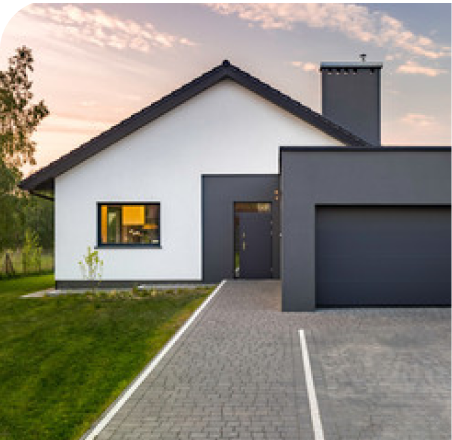How Many Smoke and Carbon Monoxide Detectors Do I Need?
September 23, 2025

Quick Summary
Install smoke detectors in every bedroom, outside sleeping areas, and on every floor.
Place carbon monoxide detectors on every floor, within 10 feet of bedrooms, and near attached garages.
Keeping your home safe means preparing for life-threatening events like fire and carbon monoxide. Both smoke detectors and CO detectors can save lives by giving early warnings that can mean the difference between safety and life-threatening events.
Below, we’ll walk through expert guidelines, examples for different home sizes, and tips for choosing the best home smoke and carbon monoxide detector.
How Many Smoke Detectors Do I Need?
General Standards
Install a smoke detector inside every bedroom.
Place one outside each sleeping area (e.g., hallways).
Put at least one on every level of the home, including the basement.
In long hallways over 40 feet, install detectors at both ends.
Example by Home Size
1-bedroom apartment (600–800 sq. ft.): Minimum 2–3 smoke detectors.
2,000 sq. ft. home with 3 bedrooms, 2 floors: Around 5–6 smoke detectors (each bedroom, hallways, and each level).
Large multi-level home (4,000+ sq. ft.): Often 8–12 smoke detectors, depending on layout.
Coverage
One smoke detector typically covers about 900–1,000 sq. ft., but placement is more important than square footage. Never skip detectors in basements, hallways, or near staircases.
Tip: Don’t install smoke alarms in kitchens, garages, or attics, where false alarms due to restricted monitoring are more common.
How Many Carbon Monoxide Detectors Do I Need?
General Standards
Install at least one CO detector on every floor, including the basement.
Place detectors within 10 feet of each bedroom door.
Add detectors near or above attached garages.
Example by Home Size
Small apartment (1 bedroom): At least 1–2 carbon monoxide detectors.
2,000 sq. ft. home with 3 bedrooms: At least 3–4 CO detectors (one per floor and near each sleeping area).
Large multi-level home: 5+ CO detectors, depending on layout and garage proximity.
Maintenance
Replace carbon monoxide detectors every 5–7 years (or per manufacturer instructions).
Test regularly (monthly, if possible), and check batteries twice a year.
Schedule yearly inspections of fuel-burning appliances like fireplaces, water heaters, and boilers.
Best Practices for Smoke and CO Detectors
Smoke and CO Detector Placement
Many families opt for installing both smoke detectors and carbon monoxide detectors throughout the home. Placing them in key areas like bedrooms, hallways, and near living spaces ensures you’re covered where it matters most. Look for UL-certified models that are reliable and meet safety standards. These detectors often integrate with your home alarm system, so alerts are recognized and acted on quickly.
Battery vs. Hardwired Battery-Powered: Easy to install but requires regular battery checks to stay effective.
Hardwired with Battery Backup: Preferred for reliability and often required by building codes. These detectors integrate with your alarm system for added safety and peace of mind.
Quick Safety Checklist
Smoke detector in every bedroom.
One smoke detector outside each sleeping area.
One smoke detector per floor, including basements.
CO detector on every floor and within 10 feet of bedrooms.
Extra CO detector near attached garages.
Monthly testing and timely replacement.
Final Thoughts
At Brinks Home, we offer connected, professionally monitored smoke and carbon monoxide detectors designed to protect your family around the clock. These smart detectors not only sound an alarm inside your home but also send immediate alerts to our monitoring center, where trained professionals can quickly dispatch emergency services if needed. Plus, every system includes free professional installation, ensuring that life safety devices are properly placed—because the right placement can make all the difference in an emergency. Contact us today for a free security consultation and let us provide the right smoke and carbon monoxide detector solution for your home.
FAQs
Do I need both smoke and carbon monoxide detectors?
Yes, smoke and CO detectors serve different purposes, and both are essential for safety.
What is the best home smoke and carbon monoxide detector?
UL-certified, professionally monitored detectors with hardwiring and battery backup offer the strongest protection. With Brinks Home, free professional installation ensures devices are placed where they’ll be most effective.
How often should detectors be replaced?
Smoke detectors every 10 years, and carbon monoxide detectors every 5–7 years, depending on manufacturer instructions.



